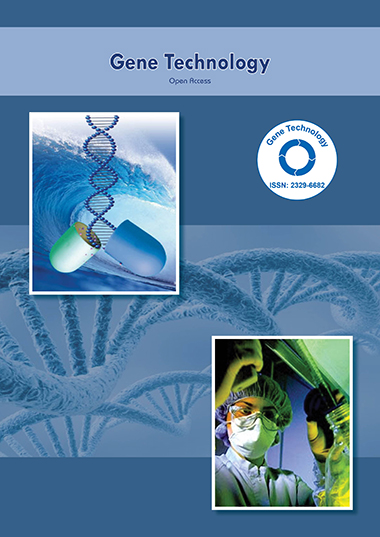PMC/PubMed Indexed Articles
Indexed In
- Academic Keys
- ResearchBible
- CiteFactor
- Access to Global Online Research in Agriculture (AGORA)
- RefSeek
- Hamdard University
- EBSCO A-Z
- OCLC- WorldCat
- Publons
- Euro Pub
- Google Scholar
Useful Links
Share This Page
Journal Flyer

Open Access Journals
- Agri and Aquaculture
- Biochemistry
- Bioinformatics & Systems Biology
- Business & Management
- Chemistry
- Clinical Sciences
- Engineering
- Food & Nutrition
- General Science
- Genetics & Molecular Biology
- Immunology & Microbiology
- Medical Sciences
- Neuroscience & Psychology
- Nursing & Health Care
- Pharmaceutical Sciences
Perspective - (2022) Volume 11, Issue 5
Applications of Genome Editing Technology Using Microorganisms
Ziwei Yang*Received: 03-Oct-2022, Manuscript No. RDT-22-18677 ; Editor assigned: 06-Oct-2022, Pre QC No. RDT-22-18677 (PQ); Reviewed: 20-Oct-2022, QC No. RDT-22-18677 ; Revised: 27-Oct-2022, Manuscript No. RDT-22-18677 (R); Published: 03-Nov-2022, DOI: 10.35248/2329-6682.22.11.204
Description
Basic science and clinical study have been significantly impacted by developments in genome editing technology and its anticipated applications. There are several methods for genome editing that have been developed. The CRISPR/Cas system in particular has enabled researchers to precisely alter the genomes of a variety of organisms, from plants to animals. The most effective tool for precisely modifying genomes at specific spots right now is genome editing technology. Genome editing techniques included the use of Zinc-Finger Nucleases (ZFNs), Transcription Activator-Like Effector Nucleases (TALENs), and the clustered regularly interspaced short palindromic repeats associated Cas9 (CRISPR/Cas9) system. ZFN and TALEN editing both use DNA-binding domains that are coupled to endonucleases.
By causing DNA Double-Strand Breaks (DSB), which promotes the error-prone Non-Homologous End-Joining (NHEJ) or a Homology-Directed Repair (HDR) at certain genomic regions, this is done to permit a wide range of genetic alterations. The CRISPR/Cas system, in contrast to ZFNs and TALENs, uses RNA to mediate a specific recognition mechanism that DSBs are introduced once the sgRNA binds to the targeted DNA region. These repair mechanisms are precisely modified by the ZFNs, TALENs, and CRISPR/Cas9 systems, which have been successfully utilised to alter the genome in human cells. These genome editing tools can be used to research disease genetic pathways, identify novel treatment targets, create new disease models, and investigate gene function. Additionally, the use of these genome editing tools in gene therapy is quite promising. Here, we examine the most recent developments in the use of genome editing technology for the analysis and treatment of genetic disorders, including Duchenne Muscular Dystrophy (DMD) and haemophilia, cancers, including Chimeric Antigen Receptor T-cell Immunotherapy (CAR-T), viral infections, including HIV and Hepatitis B Virus (HBV), bio-agriculture, and microorganisms. Several methods have been created to execute knock-in and knockout in target genes to improve gene editing, and these have been employed as therapeutic treatments to cure some disorders.
• Genome editing technologies in genetic illnesses-The application of modern medical technologies and methods to treat hereditary diseases is still challenging. Genome editing- based gene therapies can precisely convert hereditary mutations into normal genes. Lifelong treatment has been shown to be safer than conventional gene therapy, at least in animal models, according to a number of studies. It has been demonstrated that genome editing technology entirely cures deadly genetic diseases and can drastically change the current situation in which individuals with hereditary diseases are required to take medications for the rest of their lives. Genome editing is crucial for gene therapy, cell treatment, drug discovery, and new medication development.
• Genome editing technologies in cancers-Oncogene and tumour suppressor gene mutations and other modifications are part of the multi-step process that leads to cancer. Oncogene or tumour suppressor gene alterations that are reversed may successfully prevent the occurrence and growth of cancers. is a flexible genome editing tool that allows for incredibly precise genomic manipulation.
• Genome editing technologies and viral infections-These tools has been incredibly effective in battling virulent viruses. The only radical treatment for Acquired Immunodeficiency Syndrome (AIDS), which is brought on by Human Immunodeficiency Virus (HIV) infection, is bone marrow transplantation. It showed that particular targets in the HIV-1 LTR U3 region were successfully edited by /gRNA, which prevented viral gene expression and replication in latently infected microglial, promonocytic, and T cells. The HIV-1 co- receptor facilitates viral entrance into human CD4(+) cells by interacting with the gp120 envelope protein.
• Bio-agriculture and genome editing technologies-Genomic editing tools allow for precise and effective genome manipulation. Used in agriculture, including enhancing disease resistance, productivity, or breeding capacity of livestock and crops, in addition to medical research. Genome editing with Sequence-Specific Nucleases (SSNs) as a potent tool for basic and practical plant biology research is needed to address contemporary issues in agriculture. China produces a lot of agricultural goods and uses a lot of seeds. The immense issues of ensuring future food security are currently too much for traditional breeding technologies to handle.
• Microorganism genome editing technologies- editing technology system is based on and derived from microorganism genome editing, which is of considerable relevance in the advancement, innovation, and use of editing technology.
Citation: Yang Z (2022) Applications of Genome Editing Technology Using Microorganisms. Gene Technol. 11:204.
Copyright: © 2022 Yang Z. This is an open access article distributed under the terms of the Creative Commons Attribution License, which permits unrestricted use, distribution, and reproduction in any medium, provided the original author and source are credited.

